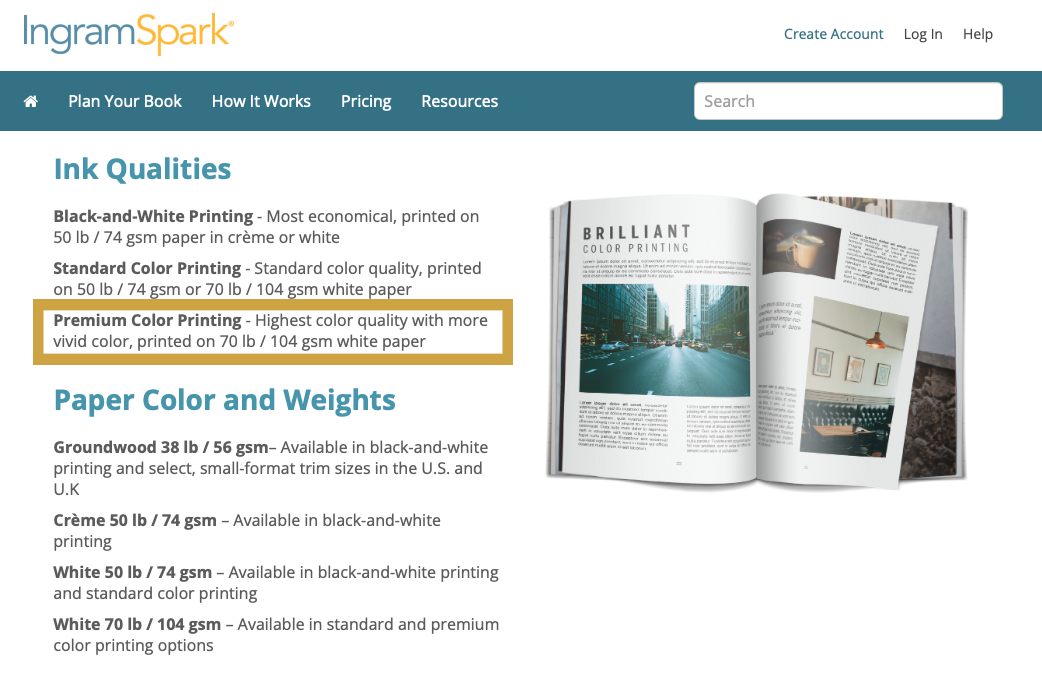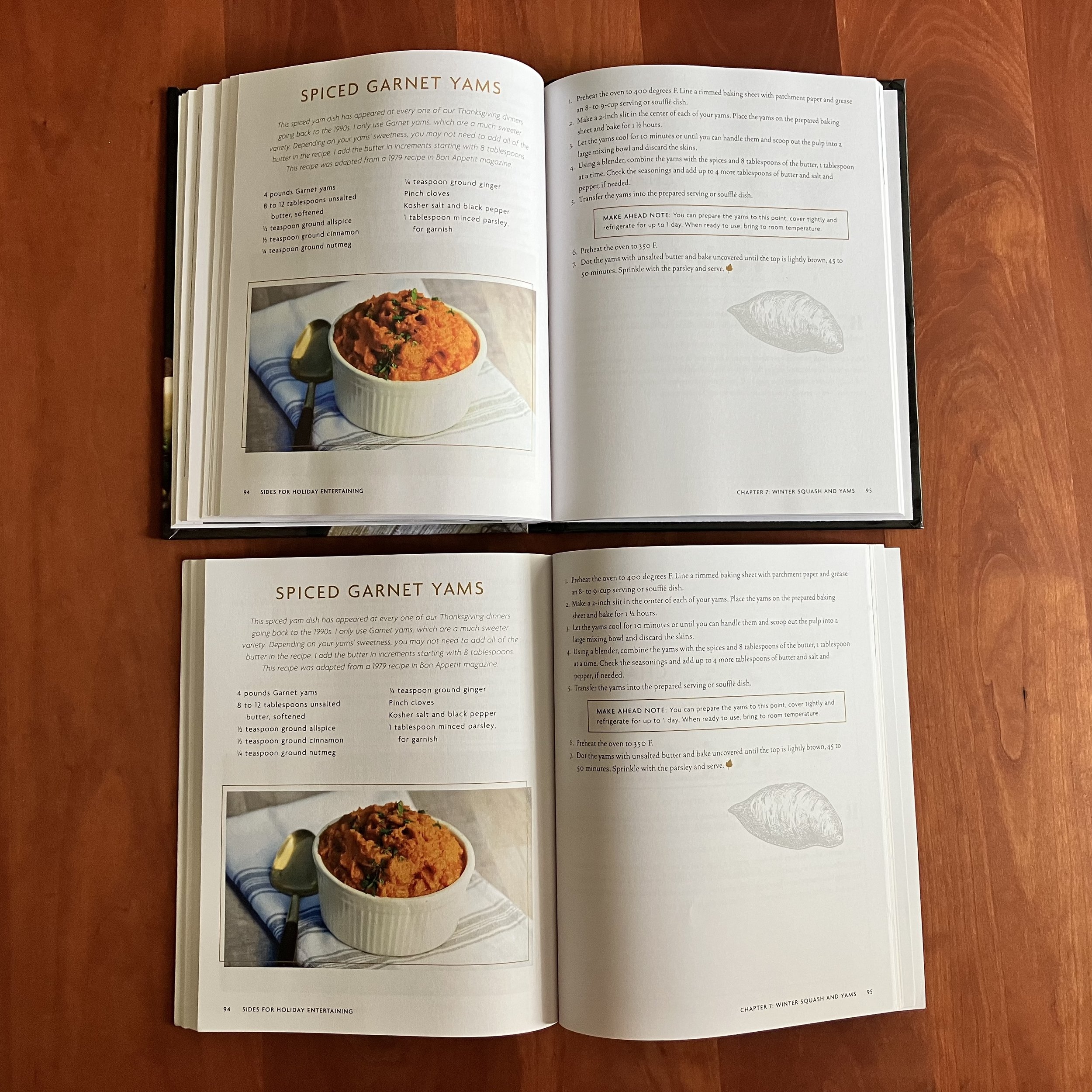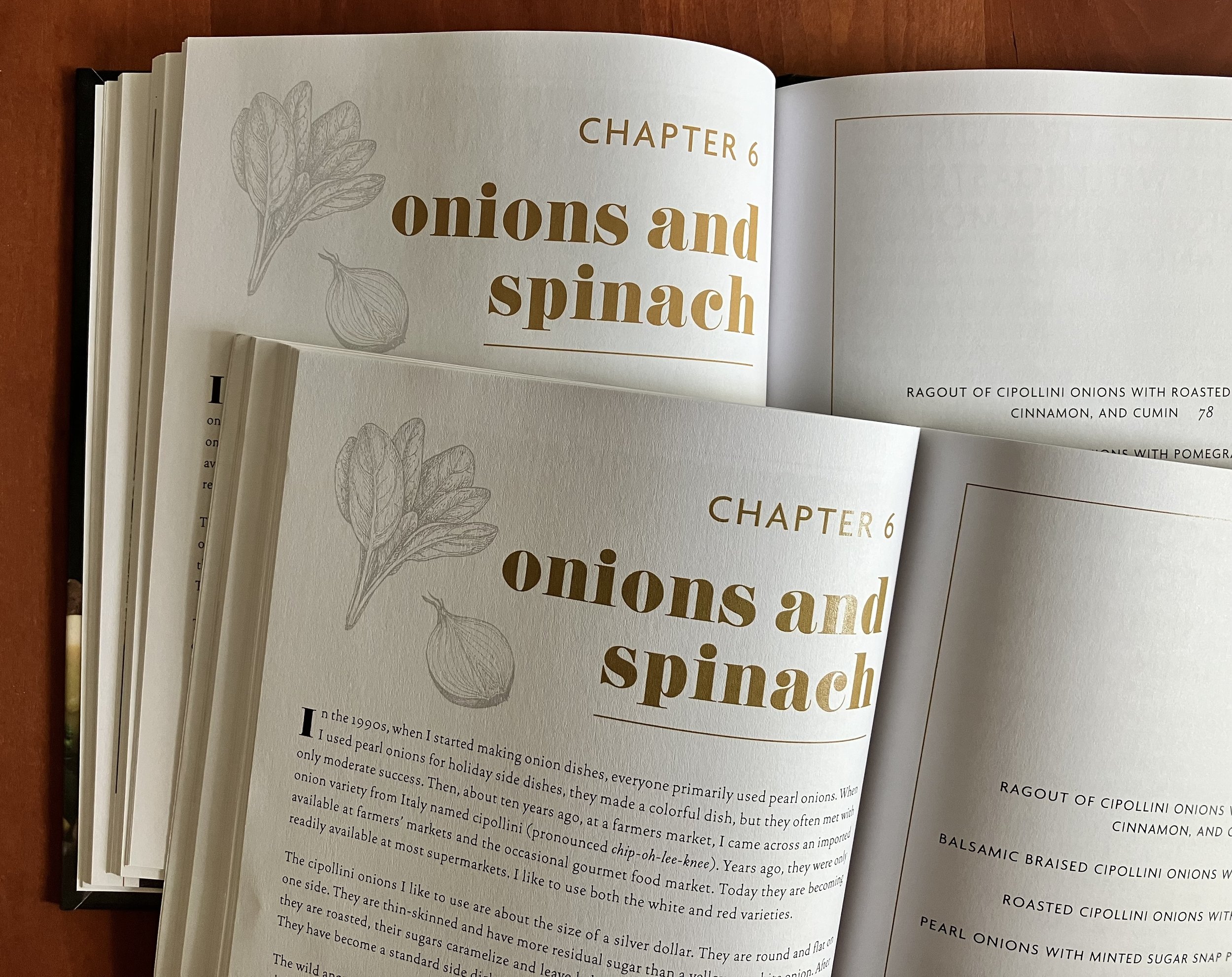I have more and more clients working with both IngramSpark and Amazon KDP (Kindle Direct Publishing) for POD (print on demand) printing, because they want both softcover and hardcover editions of their books. While Amazon KDP started to offer a few hardcover options in 2022, they still don’t have the wide variety of sizes in hardcover that IngramSpark has.
In the following post, I am going to show a side-by-side comparison of the same cookbook printed both with IngramSpark and Amazon KDP. The cookbook I am using for this comparison is Craig McMullen’s Sides for Holiday Entertaining: 60+ Delicious Thanksgiving Vegetable Recipes, available for purchase on Craig’s website.
At IngramSpark it was printed casebound using their “Premium Color” option on 70 lb. white paper (their best paper offering). Below is a screenshot of the IngramSpark offerings (as of November 2022). I had the privilege of working with Craig on the design of this passion project.
At Amazon KDP it was printed softcover, using their “Premium Color Ink” option on 60 lb. white paper. (Amazon calls it “60# or 90 GSM paper.) Below is a screenshot of the Kindle Direct Publishing offerings (as of November 2022).
This Thanksgiving cookbook is 7.5x9.25” page size. To upload his book files to IngramSpark and Amazon KDP, Craig needed three different PDFs. The same interior file could be used for both books, but the casebound (hardcover) book at IngramSpark required a different cover set-up than the softcover at Amazon KDP. Please note that it is important, if at all possible, for me to know how you will be printing (POD, conventional offset printing, etc.) and how many versions of a book you are printing (soft cover, hard cover) to provide an accurate estimate. In my experience, books set up for POD printing need to be prepared with that in mind to save any back-tracking later.
In this post, the IngramSpark print will always be shown on the left, and the Amazon KDP on the right. Below you see the front covers of the books shown side by side. The hardcover book is physically bigger because the hardcover board sticks out beyond the pages and helps to protect the interior paper. There is no major noticeable difference in the printing quality of the covers.
Below you see the back covers, the bulkier and sturdier structure of the casebound book is the only noticeable difference between the two. The books also have different barcodes/ISBNs.
The biggest noticeable difference between the interior of the two books is that the premium paper at IngramSpark is uncoated and the premium paper at Amazon KDP is coated. This makes the Amazon KDP printing look richer and deeper. Although both printers used the same file, there is a noticeable difference in the interior print, especially in black areas and in the photos.
The food photography on the interior of the cookbook has more contrast and looks sharper in the Amazon KDP print. This is primarily the effect of the coated paper vs. uncoated paper at IngramSpark.
Of course, if a person just saw one book or the other, they might not notice the more washed-out pictures in the hardcover edition. But if you are still deciding which way to go with producing your book, this information is useful for you!
For a book with few or no images, the IngramSpark uncoated paper could be fine, and it is a little bit thicker than the Amazon KDP paper. But the premium paper from Amazon KDP is a definite win over the premium paper from IngramSpark for pages with lots of ink or full color photos.
Where the IngramSpark edition definitely shines is (of course) in its durability. IngramSpark casebound books are quality productions. Although they do have a glued spine, similar to the paperback book, the cover offers significant protection, especially around the kitchen! As you may already be able to see in some of these photos, the cover on the Amazon KDP softcover edition starts to curl after a bit of use.
Craig has priced his hardcover cookbook at $39.99 and his softcover cookbook at $25.99. Obviously, with paying for design and any other costs like photography, editing, or proofreading, it is hard to break even with a print on demand cookbook, let alone make a profit. For Craig, this project was a legacy project—he wanted to share with his friends and family who have celebrated many Thanksgivings at his table over the years. Being able to sell it to others outside that circle is just an added bonus. If you need to make a profit with your cookbook, check out these ideas for marketing, getting a book printing price from a conventional printer, or printing offshore.
I hope this post is helpful! If you are looking for a Thanksgiving cookbook with a heavy focus on unique vegetable dishes, Craig’s Sides for Holiday Entertaining is a great one, and you’ll be supporting another independent content creator like yourself! Or if you are researching paper types, you may just want to order a copy or two of his book to get a feeling for what your book may look like when it is produced!











